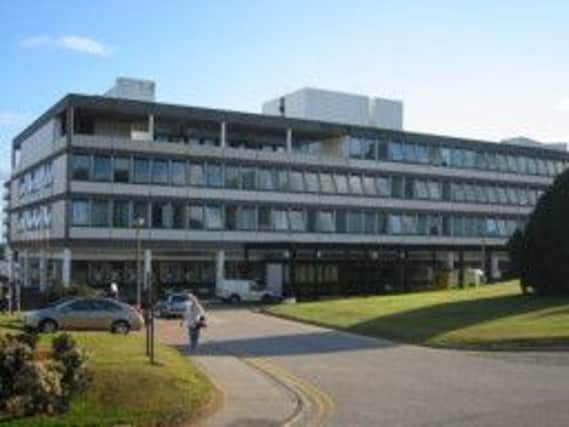Surgeon faces lifetime ban after lying about tumour


Emmanuel Labram, 58, convinced the woman not to seek further treatment by insisting she was cured for two years after the procedure.
Labram misled “Patient A” and her husband when he assured them everything was fine after operating at Aberdeen Royal Infirmary in September 2008.
Advertisement
Hide AdAdvertisement
Hide AdHe then continued the deception by lying to colleagues and forging documents.
When Labram told Patient A the lesion had “recurred” in 2010, she was forced to seek private treatment – but by that stage the tumour was inoperable.
A Medical Practitioners Tribunal Service panel ruled the doctor may have genuinely believed he had removed the lesion.
But he was found guilty yesterday of misleading and dishonest conduct for trying to cover his tracks when he realised this was not the case. The panel must now decide whether Labram is fit to continue working without restrictions. The harshest penalty available is a lifetime ban from the medical profession.
Craig Sephton QC, for the General Medical Council, told the panel: “The key issue is not the fact that he was dishonest but the fact his dishonesty may have led to ill consequences for her because she was not given the treatment she required, because Mr Lebram was concealing from her that she needed the treatment.
“What Mr Lebram did is properly classified as misconduct, and secondly this panel should be in no doubt at all that it was misconduct of such gravity and to such an extent and of repeated behaviour that it was misconduct that represents an impairment of Mr Lebram’s fitness to practise.”
After developing double vision on holiday in November 2007, Patient A consulted her optician and was referred to the Aberdeen Royal Infirmary.
An MRI scan revealed a tumour about one inch in diameter in an area in her brain known as the cavernous sinus and she saw Labram to discuss her options in June 2008.
Advertisement
Hide AdAdvertisement
Hide AdShe decided to go ahead with an operation and underwent surgery at the hands of Labram on 2 September.
After the operation, Labram told her it had been a success and explained to her husband that he had removed “100 per cent” of the tumour.
But he only removed four tiny hard pale fragments, which could not even be used to determine what the tumour was, as they were “non-diagnostic samples”.
Patient A said: “He said it’s all gone. He said it was just calcium deposits. That’s how he described it.”
Labram then sent letters to the patient’s GP telling him that no further treatment was necessary.
In January 2009, the surgeon altered a pathology report and sent a forged copy to his patient in order to conceal the fact she might need further treatment.
In May 2010, he told her he did not know the tumour was present when he operated on her and gave her another doctored pathology report with the author’s signature “cut and pasted” in.
Patient A made a complaint, and the hospital’s medical director ordered an investigation – but the doctor was able to continue working until October last year, when he took early retirement.
Advertisement
Hide AdAdvertisement
Hide AdWhen questioned about his actions in January 2011, Labram admitted his deception but said “he did not want to cause further stress to the patient”.
Labram, of Maryculter, Aberdeen, withdrew from proceedings after a failed application for voluntary erasure from the medical register.
A letter from his solicitor, read out to the panel, said: “He has made a grave error of judgment with the best of intentions. He did not intend to be dishonest, but to lessen the anxiety of his patient.”